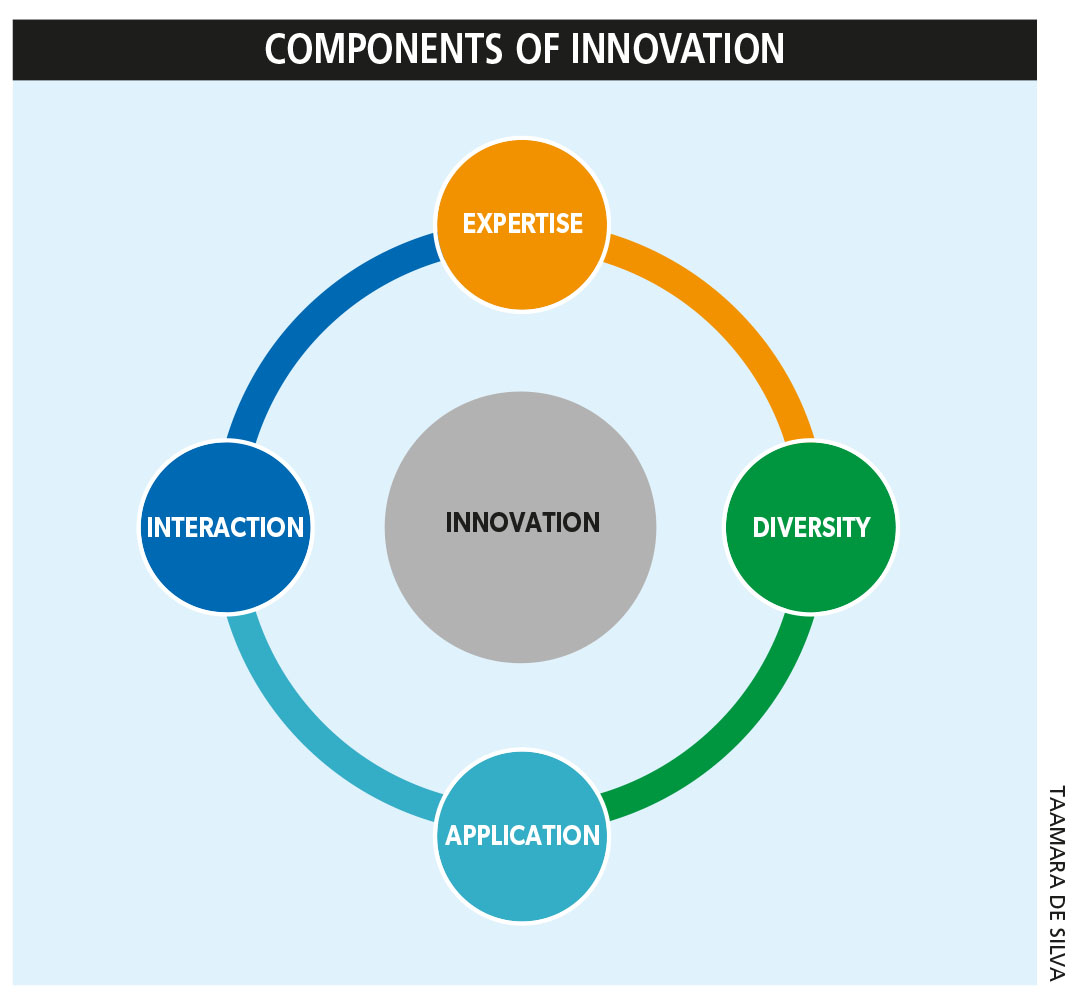INNOVATION HUBS
A NEW WAVE OF DISRUPTION
Taamara de Silva assesses the manifold benefits of investing in innovation incubators
From small startups to massive conglomerates, no one has been spared the wrath of the COVID-19 pandemic. While this global crisis has shut down entire industries, companies have no choice but to adapt and evolve. Amid the chaos however, emerges a silver lining – the ability to leverage technology and respond to changing dynamics.
Long gone are the days of traditional innovation models where groups of erudite professionals huddled together in labs, racking their brains in search of a solution – a cure for cancer perhaps!
Yet, with the advent of global interconnectedness, exponential changes in technology have disrupted business models.
Innovation hubs are becoming increasingly popular around the world; they’re social communities, work spaces or research centres, which offer subject matter expertise on technological trends, knowledge, strategic innovation and industry specific insights.
The best aspect of these hubs is that they are vital to generating new ideas, collaborating and learning quickly. Most importantly, they provide a ‘safe’ space for people to experiment, make mistakes and explore new ideas.
One of the most successful hubs run by Google is X Development, which focusses on radical changes to some of the world’s major problems. As a result, kites are being used to generate electricity in unexpected and otherwise inaccessible places, balloons provide internet access to rural villages and drones are changing how goods are delivered across the world.
Calculated adoption of accelerators or incubators by large corporates are examples of open innovation hubs focussed on breeding and nurturing new ideas. This is a strong commitment to creating a collaborative atmosphere in which strong and competitive ideas are generated.
However, unnecessary pressure by companies forcing hubs to align with corporate objectives can defeat the purpose.
Leading corporates in Sri Lanka have combined synergies with universities and research bodies to create a strong ecosystem that will empower innovation.
Recently, a wave of ‘hackathons’ and workshops have proved to be effective models for corporates looking to spur innovation but don’t have a specific direction in mind.
These environments enable experimentation and idea generation, which companies can expand on. This may take the shape of completely disruptive ideas and forge entirely new business models.
The picture is similar globally where the world’s leading innovation hubs have one thing in common – strong ecosystems. To establish this, the hubs must have large startup communities, active investors, established corporates and top universities or research institutions. Needless to say, a conducive government structure must also be in place.
How are innovation hubs set up?
They are the culmination of four components.
Expertise must be built by developing strong research capabilities and attracting world-class talent in strategic areas. This is where ideas are born. Once established, it is critical to facilitate interaction by encouraging collaboration among universities, think tanks and research institutes, which will cultivate strong networks.
Next, knowledge fields and industry sectors must be linked through multidisciplinary institutions. This diversity will not only ensure that creative sparks fly but drive market adaptability and commercial viability in the innovation process.
Finally, the application of technology and commercialisation of research by experimenting with university and industry partnerships, pioneering open intellectual property policies, and keeping industries constantly engaged will ensure sustainability and continuous innovation.
Many of the best inventions have resulted from the cross-pollination of ideas from one industry to another. Learning from what others are doing can spark new ideas. For example, some of the best innovations from innovation hubs include Amazon’s Alexa and Nestlé reinventing the coffee machine after acquiring Nespresso.
The time is right for large corporates to launch creative offices away from their day-to-day operations. For startups scouting opportunities to fine-tune and commercialise their business ideas, innovation hubs are the way forward.
This will lead to synergies of partnering and experimenting in an autonomous environment, oblivious to the many constraints and distractions of mundane business conditions. As Peter Drucker once said, “if you want something new, you have to stop doing something old.”
Innovation is driven by the ability to see connections, spot opportunities and capitalise on them. It doesn’t merely mean challenging deeply entrenched beliefs nor creating new products or methods but deploying solutions that meet new requirements and unarticulated needs, and better serve existing gaps in the market.
The whole point of a hub is its openness to experimentation and innovation. In the end, there is no proven model for innovation but innovation itself.
With the advent of global interconnectedness, exponential changes in technology have disrupted business models





